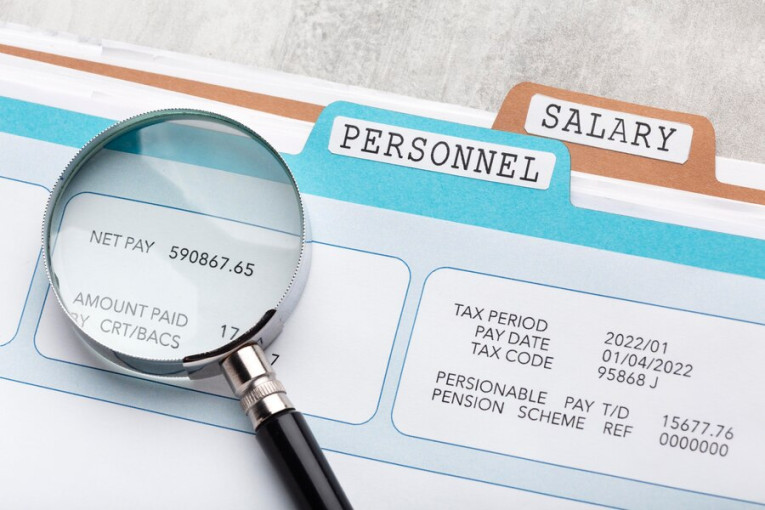
In early January, the Directorate General of Taxes at Indonesia’s Ministry of Finance officially implemented the Core Tax Administration System (Coretax) as the country’s new tax administration system.
However, since its launch, the system has faced numerous issues and complaints from the public. This is particularly concerning given its development cost of IDR 1.3 trillion, which reportedly exceeds the cost of creating DeepSeek and ChatGPT.
Responding to the situation, Dr. Rijadh Djatu Winardi, an economist at the Faculty of Economics and Business at Universitas Gadjah Mada (FEB UGM), stated that Coretax has not been functioning optimally because its implementation was rushed and lacked thorough preparation.
“It appears that the pre-implementation process was hurried and insufficiently prepared, considering the short preparation time between mid-December and the end of the year,” he said on Saturday (Feb. 15).
Dr. Winardi pointed out indications that planning and risk mitigation were not optimally executed. Moreover, the implementation stages—particularly deployment, data migration, and load balancing—did not run smoothly, leading to various technical issues such as system failures, difficulties in data migration, and a lack of training for end users.
He outlined four key factors causing Coretax’s problems. First, the system is unprepared for mass access. The surge in real-time traffic has caused network bottlenecks, slowing server response times and making the system difficult to access.
Second, crucial system functions have bugs. Key features such as reporting, data validation, and tax automation are still experiencing runtime errors and validation failures.
Dr. Winardi believes that quality assurance (QA) and user acceptance testing (UAT) were not conducted comprehensively, leading to these issues.
The third is insufficient system capacity and inefficient architecture. The system’s design is not ready for high scalability, making it prone to service disruptions when data volume spikes.
“The server infrastructure does not appear to be optimized for handling high-volume data processing and the complexity of large-scale tax transactions,” he explained.
The last is the limitations of using Commercial Off-The-Shelf (COTS) software. Coretax is built on a COTS platform, which provides only generic solutions, whereas Indonesia’s tax system has unique characteristics that require customization.
“A phased rollout is necessary until the system is fully ready for use,” he said.
Despite these issues, Dr. Winardi emphasized that Coretax is a strategic initiative aimed at strengthening tax administration through digitalization. The tax reform it supports is intended to address Indonesia’s high tax gap, which indicates unrealized tax revenue potential.
“A high tax gap means there is room to improve tax collection,” he explained.
Coretax aims to reduce the tax gap, increase the tax ratio, and improve tax data quality. The system enhances efficiency, transparency, and data integrity within Indonesia’s tax administration.
It also enables better management of taxpayer databases by automatically synchronizing data from various sources, ensuring more comprehensive and accurate records. By integrating the entire administrative process—from registration and reporting to tax supervision—Coretax has the potential to revolutionize tax administration in Indonesia.
Regarding the project’s cost of IDR 1.3 trillion, Dr. Winardi argued that it is relatively economical compared to similar projects in other countries, which can cost up to IDR 7 trillion. However, he stressed the need for a comprehensive evaluation of Coretax’s implementation.
Improved system testing, comprehensive training for end users, and continuous refinements are essential for the system to deliver its intended benefits. Additionally, better governance, transparency, and oversight—such as from the House of Representatives (DPR)—are crucial for ensuring the project’s success.
Public communication and user education are equally important. Dr. Winardi noted that even the best system would only be effective if users could operate it comfortably and efficiently.
“If each stage of system development, from needs analysis to full implementation, is properly executed, Coretax could become a cornerstone of Indonesia’s tax reform,” he said.
For now, he suggested running Coretax parallel to the legacy system. This would minimize operational risks while allowing the new system to stabilize.
A parallel running strategy would also enable the gradual identification and resolution of weaknesses in Coretax while maintaining tax administration services using the old system as a backup.
However, he emphasized that this strategy depends on four key factors: a thorough system evaluation, accountability and transparent communication regarding improvements, effective project risk management, and seamless integration of old data into the new system.
“A mass rollout should not be attempted unless the system is fully ready. A phased rollout with continuous improvements is the better approach,” Dr. Winardi asserted.
He hoped Coretax would achieve its strategic goal of improving Indonesia’s tax administration.
“If all stakeholders are committed to refining the system, Coretax could be a game changer for tax digitalization in Indonesia,” he said.
He even cited a statement by Luhut Binsar Pandjaitan, who once mentioned in the media that the World Bank considers Indonesia one of the worst countries in terms of tax collection.
The bank estimated that if Indonesia could optimize its tax management, state revenue could increase by 6.4% of GDP—equivalent to an additional IDR 1,500 trillion.
Author Leony
Editor: Gusti Grehenson
Photo: Freepik

